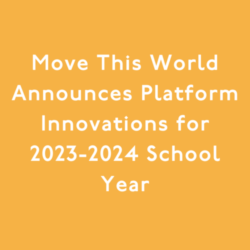A core practice in social emotional learning is to strengthen the mind-body connection, so it makes perfect sense that health and physical education classes heavily emphasize social emotional learning. But for many adults who didn’t grow up with SEL, memories of PE classes may spark anxious flashbacks to painful dodgeball games or the classic worry of getting picked last for teams.
These days, however, instructors are leveraging social and emotional learning in the physical education curriculum to help strengthen the mind-body connection and center mental, social, and emotional health along with physical health.
What is SEL in Physical Education?
SEL in physical education encourages activity while helping students build SEL skills. Social emotional learning activities in physical education can deepen the experience students have engaging in physical fitness and sports, helping build an awareness for how physical health impacts us, learning how to navigate failures and successes, work on a team with peers, and learning how to recognize emotions in our bodies. All students, regardless of physical fitness levels or abilities, can have a more enriching experience in PE classes when SEL is integrated into the curriculum.
See also: What is SEL?
Benefits of SEL in physical education
Physical education focuses on our physical health, which is intricately connected to our mental, social, and emotional health. But without intentionally incorporating those elements of health into a PE or health class, we are doing students a disservice. There are benefits of SEL that are felt in any classroom, regardless of subject matter, including decreased behavioral incidents, stronger relationships and peer collaboration or teamwork, more resiliency amongst students, increased ability to ask and receive help, and more reflective, self-aware learners.
In a PE class specifically, these benefits can increase student buy-in and engagement during class, contribute to a stronger school community, and most importantly give students an opportunity to practice applying critical social and emotional skills in authentic experiences. Within the busy school day, PE class is one of the only times that students are able to get up, move, and play. These moments of interaction create opportunities to authentically practice the social and emotional skills that students may discuss or learn about in other classes.
Strengthening the mind-body connection
Our emotions are often called feelings, because we feel them! The school day is full of cerebral processing and critical thinking, but social emotional learning provides an opportunity for kinesthetic learning, allowing students to build awareness of their feelings and emotional responses. How we feel – our thoughts, attitudes, and beliefs – can impact our physical body, and our body gives us clues when we need to care for ourselves socially, emotionally, or mentally. Strengthening the mind-body connections helps students learn to listen to their bodies in order to notice signs of stress, anxiety, or depression, for example. It’s also important for students to learn the mind and body are one and the same, so caring for your mental health supports your physical health and caring for your physical health supports your mental health.
Improving Classroom Climate
Giving students opportunities to authentically practice social and emotional skills strengthens their ability to transfer skills to various environments, like the classroom. Practicing social emotional learning in physical education classes can benefit students throughout the entire school day, even when they are required to sit in desks and focus on academic learning. Strengthening the mind-body connection develops more self-aware learners who are better at recognizing and regulating their emotions, asking for help, and working with others, all skills that foster collaborative, respectful, welcoming classroom environments. The physical activity and social interaction that students experience in a physical education class is a daily requirement for children, and perhaps the most important part of the school day for their development.
To help students cope with the pandemic and support learning recovery efforts, some schools have added additional recess or physical education time with the understanding that students’ cognitive abilities are improved through physical activity. Instead of doubling down on rote memorization or academic skill development sitting in desks in classrooms, relying on classroom management to keep students focused and productive, providing more opportunities for play, physical activity, and movement can actually improve the brain’s ability to learn and retain information. If there is ever a time to double down on physical education classes and integrate social and emotional learning in the physical education curriculum, it’s now.
The Nation’s Leading SEL Company
Move This World is the leading provider of social emotional learning (SEL) multimedia experiences for students, teachers, and families. Our SEL programs are customized for PreK-12 students and are delivered through short interactive lessons with the goal of empowering students to navigate the rapidly-changing realities of their world – both in the classroom and throughout their lives. The impactful yet simple Move This World SEL curriculum allows educators and families to incorporate Social Emotional Learning into their schedules every day, without planning or prep.
Contact us to learn more about SEL Grants and bringing Social Emotional Learning to your classroom.
Related links:










